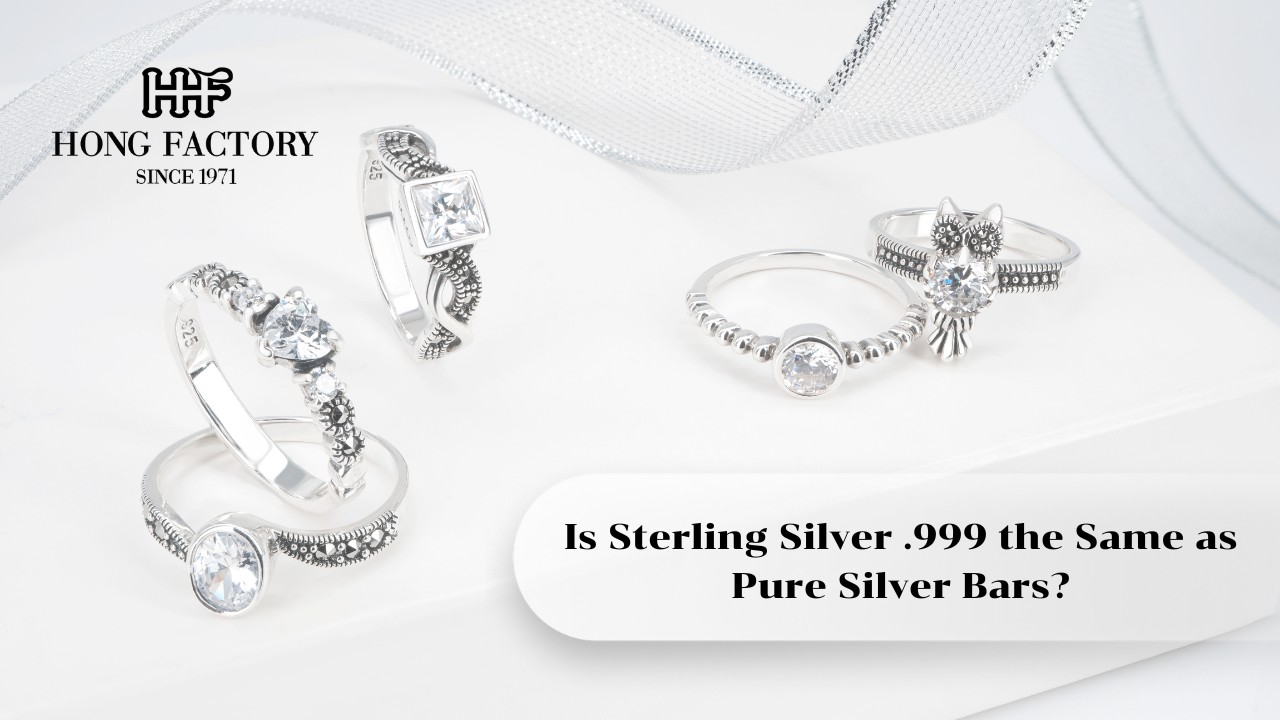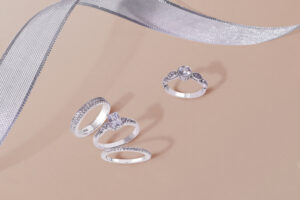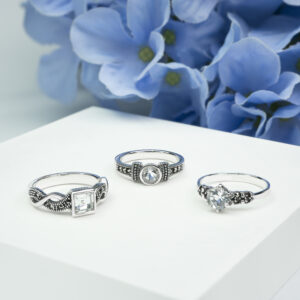
Is Sterling Silver .999 the Same as Pure Silver Bars?
- by admin
Silver is one of the most admired precious metals in the world, known for its shine, versatility, and timeless appeal. However, not all silver is identical. One of the most common questions among collectors and jewelry enthusiasts is whether Sterling Silver .999 is the same as pure silver used in bars and bullion. Although they may sound similar, these two forms of silver have distinct properties, purposes, and values. Titanium earrings for sensitive ears
To understand this clearly, let’s break down what .999 silver truly means and how it compares with the sterling silver alloys commonly found in jewelry.
What Does .999 Fine Silver Mean?

The term .999 fine silver refers to silver that is 99.9% pure. It is the highest level of purity typically achievable for commercial silver products. Because of its extreme purity, it’s also called fine silver or pure silver. This grade of silver is used primarily in investment-grade silver bars, coins, and bullion items valued for their metal content rather than for wearability or decorative appeal.
Fine silver has a soft texture, making it less ideal for jewelry that must withstand daily wear. Its softness, however, allows artisans to shape it into intricate designs for collectible pieces or ceremonial items.
Is Sterling Silver .999 the Same as Pure Silver Bars?
The short answer is no. While they both contain silver as their primary metal, Is Sterling Silver .999 equivalent to pure silver bars in purity or purpose? Not quite. Sterling silver typically contains 92.5% silver and 7.5% copper or other metals, making it less pure but more durable. This alloy is known as .925 sterling silver.
Pure silver bars, on the other hand, are composed of 99.9% silver (.999) and are minted for investment, storage, or industrial applications. The focus of these bars is on silver content and authenticity rather than design or practicality for adornment.
Key Differences Between Sterling Silver and Pure Silver Bars
Here are the main distinctions that set them apart:
- Purity Level – Sterling silver is 92.5% pure, while silver bars are 99.9% pure. That 7.4% difference may seem small but has a significant effect on hardness and usability.
- Purpose – Sterling silver is primarily used for jewelry, decorative pieces, and luxury accessories. Silver bars are designed for investment and storage, representing intrinsic value in the form of precious metal.
- Durability – Because pure silver is softer, sterling silver’s alloy composition makes it more suitable for wearable art.
- Value Measurement – The value of sterling silver depends on craftsmanship, design, and brand, while the value of silver bars is determined purely by weight and silver market price.
Why Jewelry Rarely Uses .999 Silver
While .999 silver is prized for its purity, it’s too soft to be practical for jewelry production. Rings, bracelets, or necklaces made from pure silver could easily bend or scratch during regular wear. Luxury jewelers prefer .925 sterling silver because it maintains its shape and provides a better base for gemstone settings or engraving.
This is why even high-end jewelry brands that emphasize purity, such as Tiffany & Co. or Bulgari, rarely produce pieces in .999 silver. Instead, they focus on sterling silver, which balances beauty with everyday functionality.
When .999 Silver Is Used in Jewelry
Although uncommon, some jewelers still use .999 fine silver in special collections or artisanal designs. These may include:
- Commemorative Jewelry Pieces: Handmade pendants or art pieces intended for display rather than daily use.
- Cultural Jewelry: Certain Asian or ethnic jewelry traditions use fine silver for its association with purity and spiritual symbolism.
- Limited Editions or Custom Designs: Some designers use fine silver for exclusive or collectible pieces to highlight craftsmanship.
In such cases, the goal is to showcase the brilliance and purity of fine silver rather than its practicality.
The Role of .999 Silver in Bullion and Investment

In contrast to its limited jewelry applications, .999 fine silver is the standard for investment silver. Silver bars, coins, and rounds from global mints such as the Royal Canadian Mint, Perth Mint, and U.S. Mint are produced using .999 or even .9999 silver.
These bars are certified for weight and purity, often accompanied by serial numbers and mint stamps to verify authenticity. Investors buy these bars not for aesthetics but as a hedge against inflation, a store of value, or a diversification tool in their portfolios.
Comparing Aesthetic and Economic Value
- Aesthetic Value: Sterling silver jewelry carries emotional and artistic value, often tied to craftsmanship, design, and fashion. It’s appreciated as wearable art.
- Economic Value: Pure silver bars focus purely on metal content and purity, making them ideal for long-term holding or trading based on silver’s market price.
While both hold value, they serve entirely different markets one driven by beauty and the other by investment.
The Symbolism of Purity in Both Forms
Even though .999 fine silver and .925 sterling silver serve different purposes, they share a symbolic connection to purity, elegance, and timelessness. Both represent authenticity and quality, whether adorning someone’s wrist or resting securely in a vault.
In luxury marketing, this concept of purity often becomes a metaphor for trust and excellence, two qualities that elevate silver beyond mere metal.
Conclusion: Two Faces of the Same Precious Metal
So, Is Sterling Silver .999 the Same as Pure Silver Bars? Not exactly. Although they both come from the same precious metal, they are crafted for entirely different purposes. Sterling silver blends strength and beauty, perfect for jewelry that lasts a lifetime. Meanwhile, .999 fine silver represents purity and investment value, ideal for collectors and investors seeking tangible wealth.
In short, sterling silver belongs to the world of artistry and adornment, while .999 silver bars stand as symbols of security and intrinsic worth. Both shine in their own right, one on your wrist, the other in your safe each reflecting the enduring brilliance of silver in its purest form.
Silver is one of the most admired precious metals in the world, known for its shine, versatility, and timeless appeal. However, not all silver is identical. One of the most common questions among collectors and jewelry enthusiasts is whether Sterling Silver .999 is the same as pure silver used in bars and bullion. Although they…